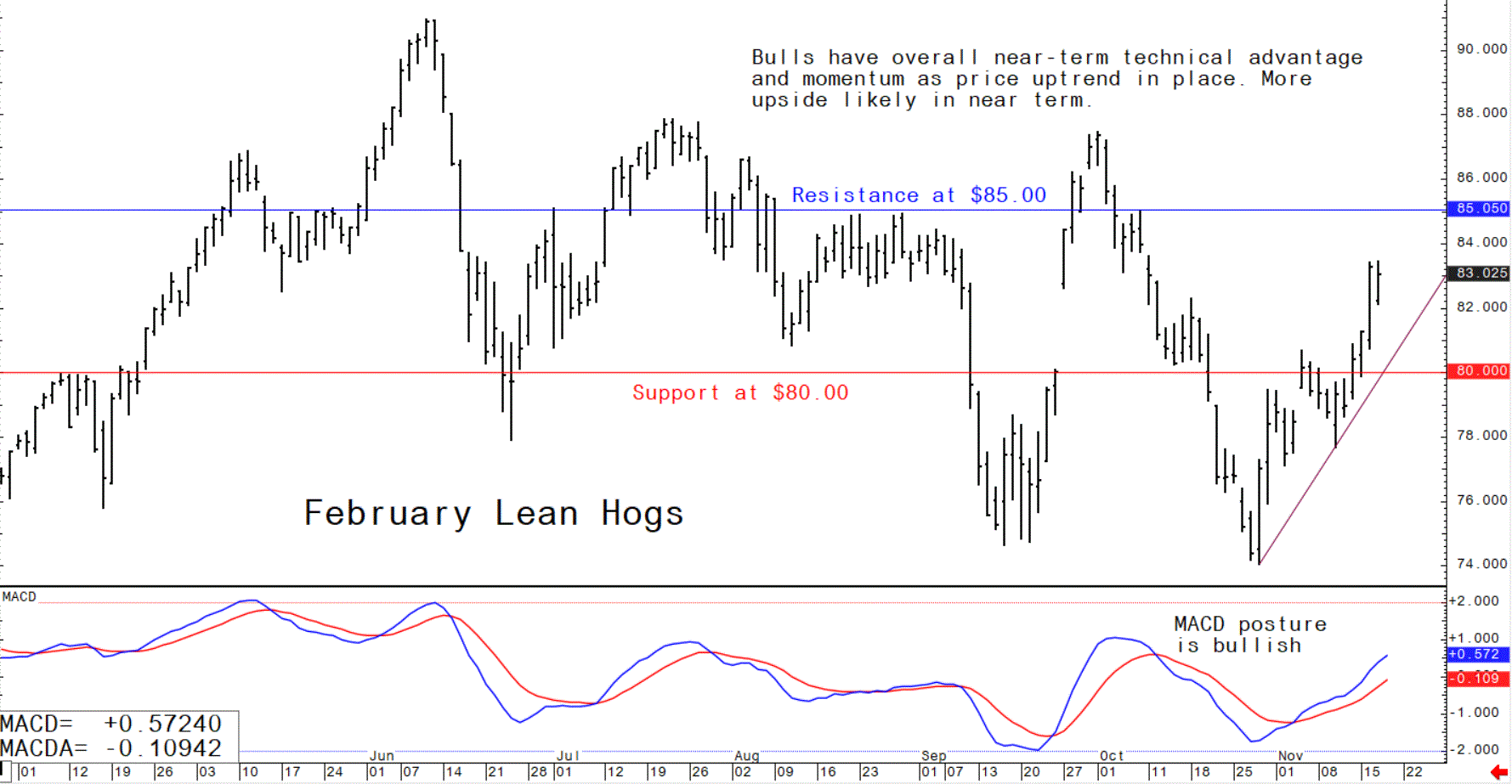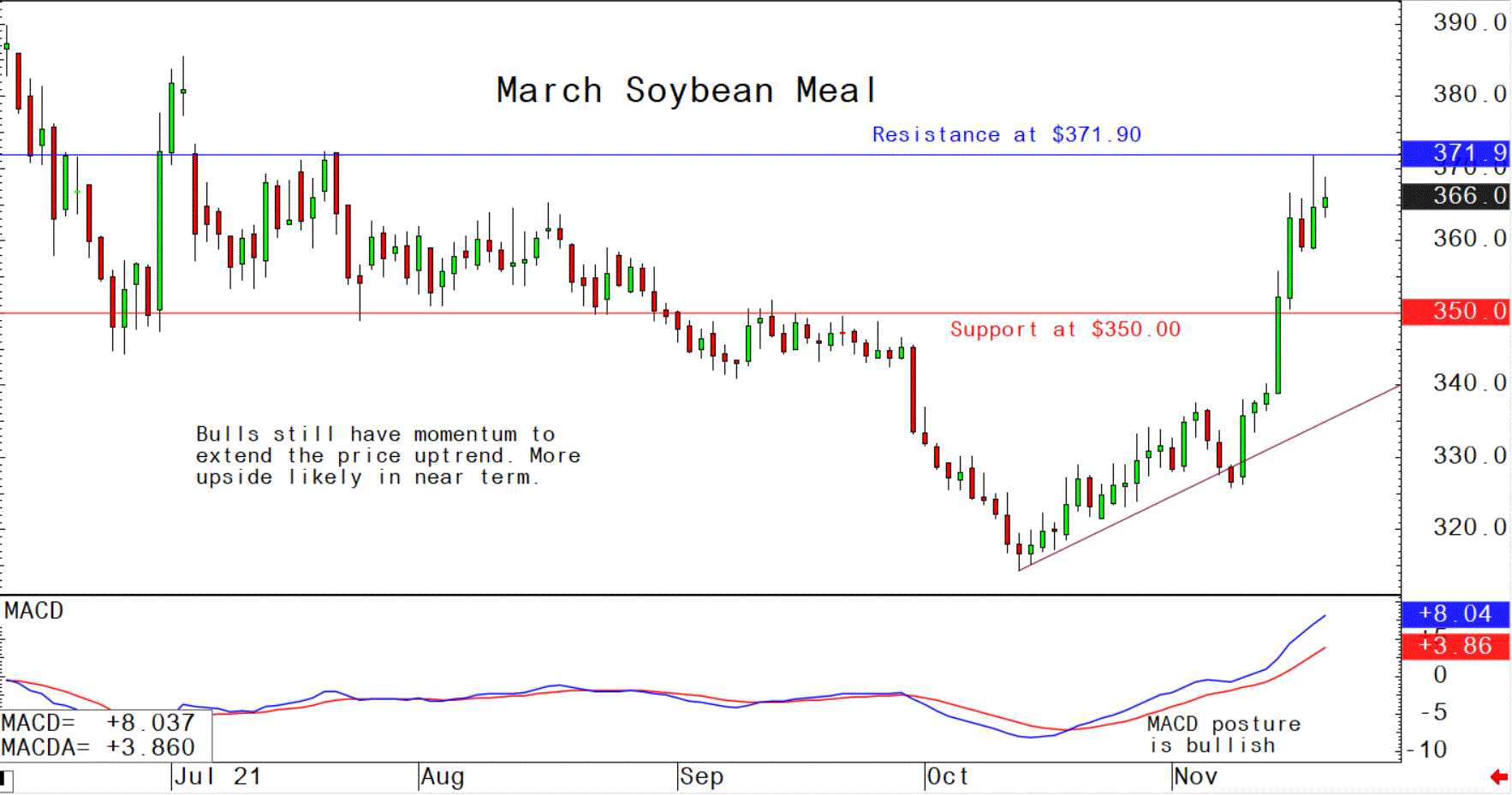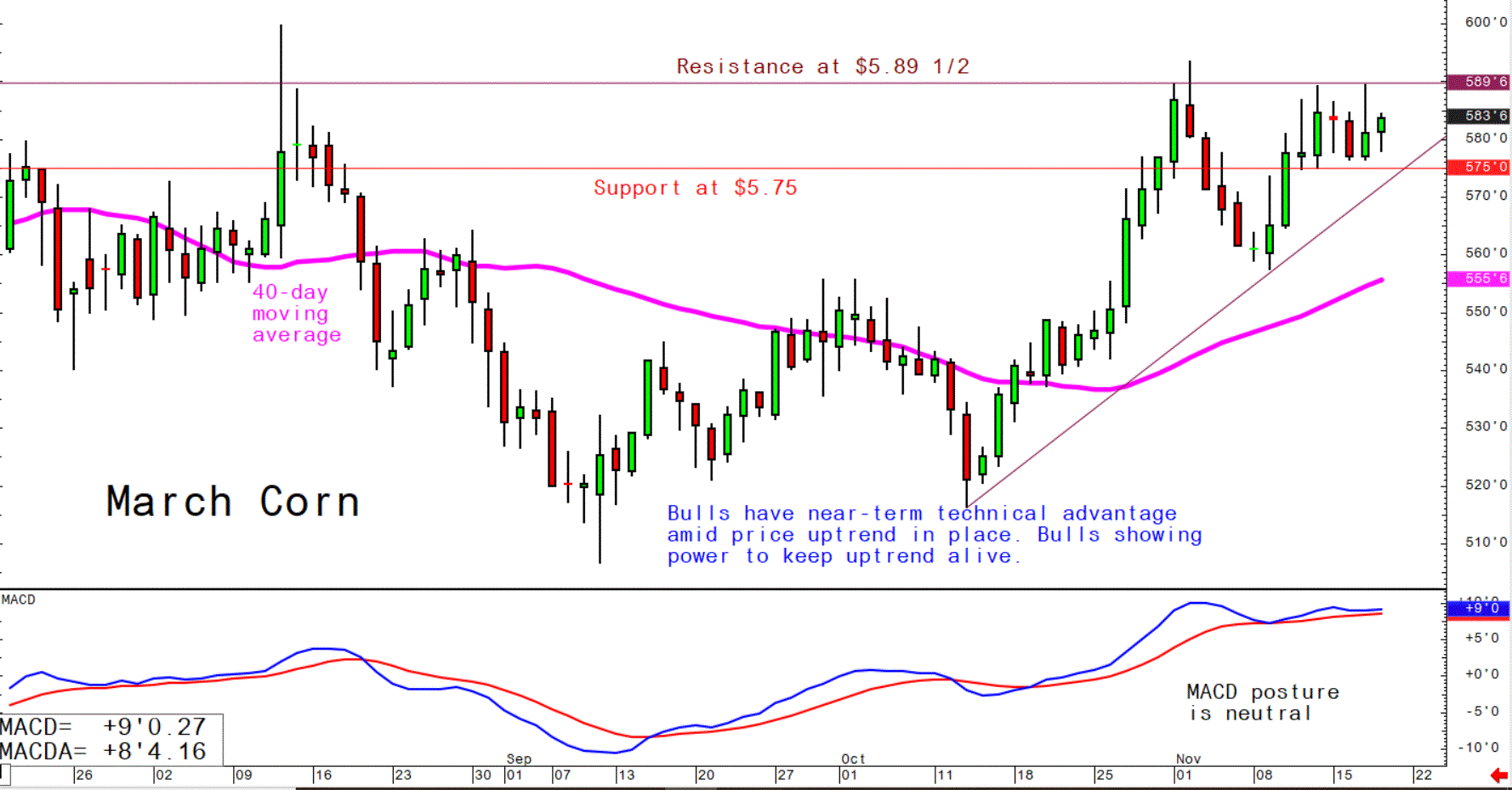



Pig outlook: Solid rebound in lean hog futures suggests more upside
February lean hog futures this week hit a five-week high and the bulls have established a price uptrend on the daily bar chart, to suggest sideways-to-higher price action in the near term, reports livestock analyst Jim Wyckoff.
Signs of stabilization in the CME lean hog index this week have helped hog futures extend gains. High beef prices at the retail level are also prompting substitution demand for pork, including solid demand for hams ahead of the holiday season.
Latest USDA and other news regarding the global pork industry
US pork export sales rise slightly in latest week
USDA Thursday morning reported US pork net sales of 25,000 MT for 2021 were up 7 percent from the previous week, but down 16 percent from the prior 4-week average. Increases primarily for Mexico (16,900 MT, including decreases of 600 MT), Japan (3,800 MT, including decreases of 200 MT), Canada (1,600 MT, including decreases of 600 MT), Colombia (1,100 MT, including decreases of 100 MT), and Australia (700 MT, including decreases of 100 MT), were offset by reductions for South Korea (900 MT). Net sales of 5,100 MT for 2022 were primarily for South Korea (4,200 MT) and Australia (800 MT). Exports of 34,700 MT were up 9 percent from the previous week and 6 percent from the prior 4- week average. The destinations were primarily to Mexico (16,200 MT), Japan (4,600 MT), China (4,400 MT), South Korea (3,000 MT), and Colombia (2,100 MT).
Chinese pork imports fall sharply from year-ago in October
China imported 200,000 MT of pork in October, which was down 4.8% September but 41.1% lower than last year. Through the first 10 months of this year, China imported 3.34 MMT of pork, a 7.7% drop from the same period last year.
Tyson Foods sees rise in sales despite raising prices for its beef, chicken and pork
Faced with a US tight labor market, Tyson has raised wages and added benefits like sick leave for plant workers to help boost staffing. The Arkansas-based meat firm lifted prices across all of its major divisions as cost of cattle jumped by one-fifth year over year in the quarter ended Oct. 2. Tyson’s logistics expenses climbed about 30%, executives said, while the company also has paid more for ingredients and packaging materials. Tyson, which produces roughly 1 of every 5 pounds of chicken, beef and pork in the U.S., and other meatpackers have been struggling to keep up with demand from supermarkets and reopening restaurants. A nationwide labor shortage has left many processing plants understaffed.
Over the most recent quarter, its average beef prices rose by nearly one-third since last year, while pork prices jumped by 38% and chicken about 19%. “The inflation we incur needs to be passed on,” said finance chief Stewart Glendinning. Tyson’s earnings rose to $1.36 billion in the fourth quarter, more than doubling from that period last year, and its beef unit’s operating margins jumped from 9.7% a year ago to 22.9%.
Meantime, Smithfield Foods will develop a preparedness plan for infectious diseases. Smithfield will pay a $13,494 penalty for failing to protect workers from the coronavirus at its South Dakota slaughter plant in 2020 and will develop a company-wide preparedness plan against infectious diseases, the Labor Department said on Monday. Smithfield closed the plant in Sioux Falls for 25 days during a Covid-19 outbreak that infected 1,294 workers and killed four of them.
USDA’s annual livestock outlook
US beef exports as a share of production are expected to fall slightly from 12.4 percent in 2021 to 12.1 percent in 2022. Both production and exports of beef are expected to decrease from 2021 to 2022. The share of U.S. pork production exported is expected to increase from 26.0 to 26.8 percent from 2021 to 2022, as production is forecast to decline slightly in 2022 while exports increase by about 3 percent year over year.
Pork/Hogs: Continued lower processing demand for hogs in the fourth quarter is expected to be largely offset by heavier average dressed weights, leaving the commercial pork production forecast largely unchanged from last month at 7.2 billion pounds, down by more than 4 percent from the same period a year ago. Forecasts for pork exports both this year and in 2022 are unchanged from last month. This year, exports are forecast at 7.2 billion pounds, down about 1 percent, and in 2022 exports are expected to be 7.4 billion pounds, 3 percent higher than shipments in 2021.
The next week’s likely high-low price trading ranges:
February lean hog futures--$80.00 to $85.00 and with a higher bias
March soybean meal futures--$355.00 to $385.00, and with a sideways-higher bias
March corn futures--$5.70 to $6.00 and a sideways-higher bias
Latest analytical daily charts lean hog, soybean meal and corn futures










